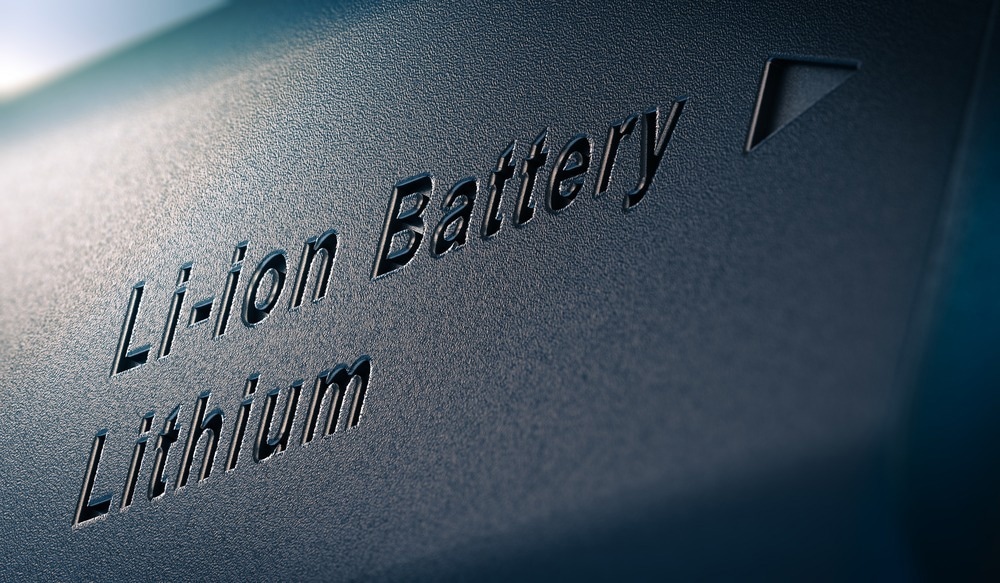In a paper recently published in the journal ACS Energy Letters, researchers reviewed the elimination of cobalt (Co) from lithium-ion batteries (LIBs) in order to improve sustainability-related issues and explore the features of Co-free cathodes.

Study: Can Cobalt Be Eliminated from Lithium-Ion Batteries? Image Credit: Olivier Le Moal/Shutterstock.com
Background
In the 1980s, the LiCoCO2 (LCO) cathode was discovered, which prompted the use of layered oxides in LIBs that powered portable electronic devices. Since then, several cathodes have been used in LIBs within electric vehicles (EVs). However, the rising popularity of LIBs has further created a shortage of the same.
The EV sector is dominating the LIB market, and by the year 2030, 90% of the global LIB demand is expected to be from the EV sector. Consequently, the aggressive ramp-up in cell production by the LIB manufacturers to keep the supply in line with the rising demand raises concerns related to sustainability and the costs of the existing LIB production practices.
Among the raw materials used in LIB manufacturing, Co entails problems such as a weak supply chain, human cost, and price volatility. Furthermore, the expansion of Co mining to increase the supply is challenging since Co is derived as a by-product of copper and nickel ores, and it is present in concentrations ten times lower. The supply chain has further geopolitical risks associated due to the predominant location of Co-processing facilities in China and the Democratic Republic of Congo (DRC). Therefore, there exists a need to abolish or reduce the usage of Co in cathodes to alleviate supply chain issues, as well as reduce costs and improve sustainability in the LIB industry.
Increasing the Ni Content
Due to its greater volumetric capacity, cycling stability, and other factors, LCO continues to dominate the market for portable electronics, but it has proven to be too expensive to be used in EV applications. Substitution of Co with Mn and Ni could improve usable specific capacity using Ni, retaining the benefits of Co, including easy ionic conduction along with low Li/Ni mixing, which is essential for effective ionic conduction. As a result, oxides layered with advancing Ni concentration have gradually gained popularity. LiNiO2 (LNO), the prototypical high-energy material, has a mean voltage of approximately 3.8 V.
However, as the Ni concentration within the layered oxides rises, so do the structural, thermal, and surface instabilities, which affect the battery’s safety and durability. Additionally, high-Ni layered oxides undergo a greater release of exothermic energy during thermal runaway at a comparatively lower initial temperature, endangering the safety of the battery.
Mn-Al Combination
Oxide cathodes layered with Ni continue to be the best option with respect to EV applications. This is because of their suitable rate performance and cycle life, high energy density, and well-established infrastructure for large-scale production. The general consensus showed that Co3+ charge balancing is necessary in order to minimize the harmful effects of Mn4+ inducing the production of Ni2+. This prompts efforts to replace Mn4+ with Al3+ since it shares certain advantages with Co3+, such as increasing charge/discharge rate while decreasing Li/Ni mixing and increasing thermal stability with decreasing surface reactivity.
However, these alterations are more likely to be an advantage of Al in reducing parasitic surface reactions that occur at a high state-of-charge (SoC) rather than the elimination of Mn. These findings indicate that Co3+ is inessential for oxide cathodes layered with high Ni.
Fe-Based Cathodes
Due to the abundance of raw materials, Mn- and Fe-based cathodes are desirable substitutes to Ni- and Co-based cathodes in EV applications despite having lower energy densities. Polyanionic types of Fe-based cathodes are the most common since the Fe2+/3 electrical configurations do not favor a layered structure of LiFeO2, which has the ability to inversely insert lithium. Furthermore, LiFePO4 (LFP) displays a remarkable cycle life as well as rate capability alongside strong tolerance for harsh operating circumstances. However, LFP has been proven to be a subpar electronic conductor that needs surface carbon coating in order to support adequate electrical percolation all over the electrode.
EV battery makers are increasingly using LFP despite its lower energy density due to its cheap and plentiful raw material supply. Newly developed EV battery packs have been found to incorporate innovative high-capacity prismatic LFP cells without utilizing battery modules. The packing efficiency of cell-to-pack battery packs based on LFPs is about 40% higher compared to layered oxide battery packs based on Ni. This allows for a reasonably priced battery pack with efficient energy density. Such a technological breakthrough serves as a significant turning point for LFPs, enabling the widespread integration of LIBs based on LFPs into affordable EVs.
Conclusions
To summarize, the researchers reviewed and established that the dependency on Co cathodes needs to be abolished and replaced by cost-effective and environmentally and economically sustainable alternatives as cathodes in LIBs. Additionally, efforts to study metal-free cathode chemistries would aid in diversifying the battery scenario by overcoming the concentration of Co- and Ni-based LIBs to sustain renewable energy and electric transportation.
More from AZoM: How Does Laser Cleaning Technology Function?
Disclaimer: The views expressed here are those of the author expressed in their private capacity and do not necessarily represent the views of AZoM.com Limited T/A AZoNetwork the owner and operator of this website. This disclaimer forms part of the Terms and conditions of use of this website.
Source:
Lee, Steven, Manthiram, Arumugam, Can Cobalt Be Eliminated from Lithium-Ion Batteries?, ACS Energy Lett. 2022, 7, XXX, 3058–3063, https://doi.org/10.1021/acsenergylett.2c01553